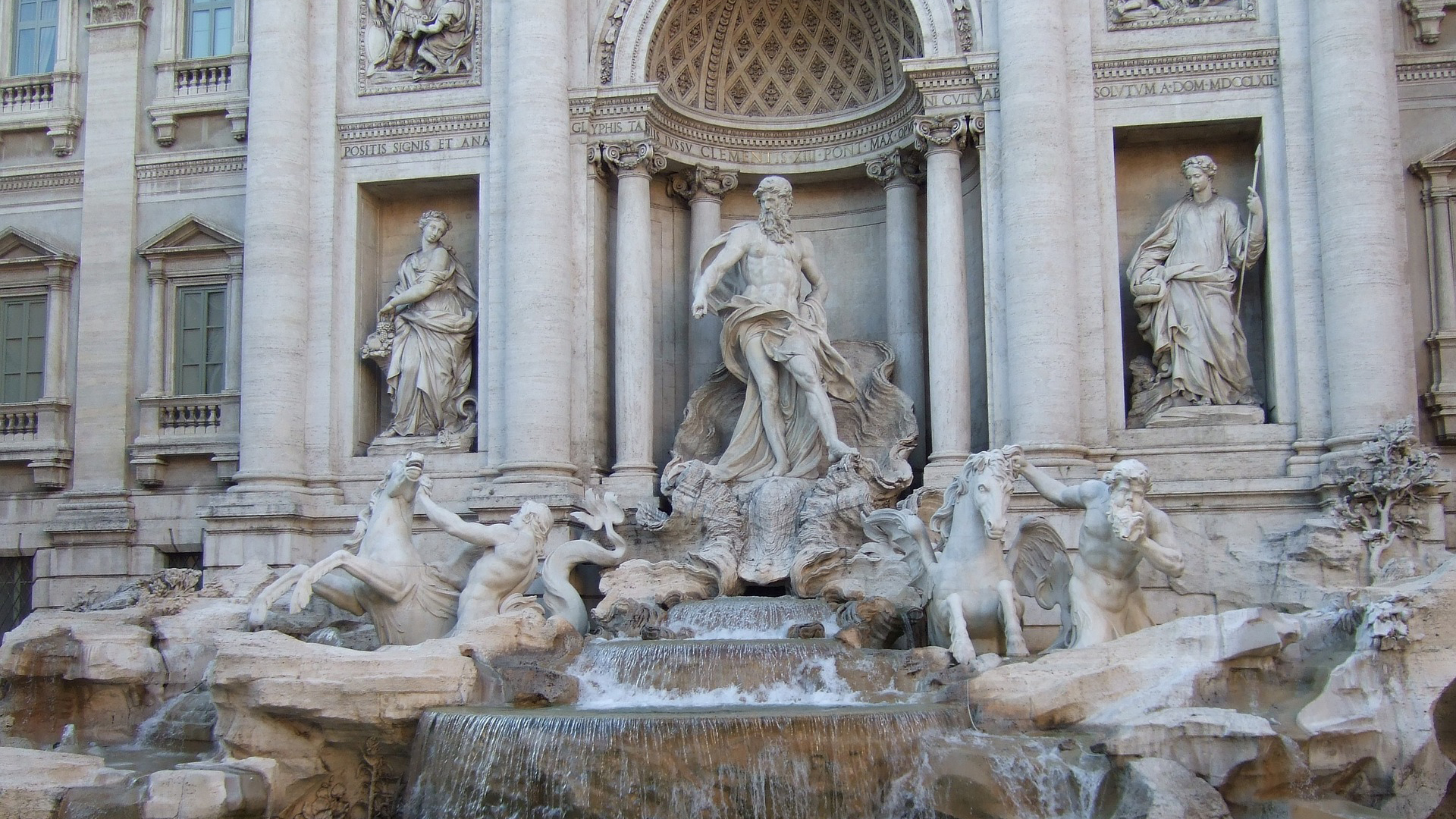The Eternal City’s Trevi Fountain is one of the city’s most popular tourist attractions. Tucked deep into the historic city center at the convergence of three narrow cobblestone streets that somehow muffle the fountain’s roar until you round their corners, the impressive structure was inaugurated 261 years ago on May 22, 1762.
Prior to the Trevi Fountain’s construction, an ancient fountain dating to the times of the Romans existed at its site. It was fed by the Aqua Virgo Aqueduct, constructed in 19 BC to provide water to Roman baths and fountains. In 1629, Pope Urban VIII commissioned the great Baroque architect Gian Lorenzo Bernini to modify and expand upon the current fountain. When the pope died some years later, so did his dream for the fountain. It wasn’t until nearly a century later in 1730 that Pope Clement XII held a contest to redesign the fountain, in which Roman-born architect Nicola Salvi won.

Work on the Trevi Fountain began in 1732 and was carried out by Giuseppe Pannini once Salvi died in 1751. It was built at the end point of the Aqua Virgo Aqueduct, at the junction of tre view, meaning three streets in English, giving the fountain its name: Trevi. The monumental structure was finally completed in 1762, 30 years after construction began, and was inaugurated to the Roman public on May 22 by Pope Clement XIII.
The Trevi Fountain is 85 feet high and roughly 160 feet wide, making it the largest fountain in the city. Built out of Travertine stone sourced from Tivoli, a town located some 20 miles east of Rome, the fountain has at its center a massive statue of Oceanus, the god of water, flanked by smaller statues of the gods of Abundance and Health. Below the gods are intricately carved hippocampi, fish-tailed horses of the sea, and tritons, fish-tailed mermen. At the top of the structure is the Papal Coat of Arms held on either side by angels.
According to local legend, those who toss coins into the fountain’s water are guaranteed to return to Rome. Roughly $3,000 of change is thrown into the massive structure’s pool each day, and about $1.5 million is collected each year. Since 2001, the funds have been regularly collected and donated to a local charity called Caritas, which provides soup kitchens, homeless shelters, and more for the city’s poor. The decision to donate the fountain’s change to charity was primarily in response to people stealing the coins directly out of the water.
Asia London Palomba
Asia London Palomba is a trilingual freelance journalist from Rome, Italy. In the past, her work on culture, travel, and history has been published in The Boston Globe, Atlas Obscura, The Christian Science Monitor, and Grub Street, New York Magazine's food section. In her free time, Asia enjoys traveling home to Italy to spend time with family and friends, drinking Hugo Spritzes, and making her nonna's homemade cavatelli.

